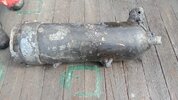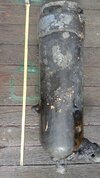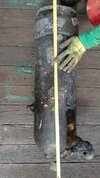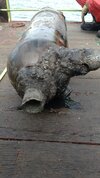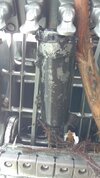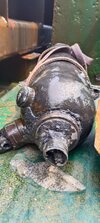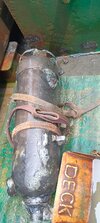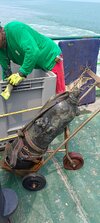You have quite a number of different JATO /RATOG depending of the country of origin and period.
These are for instance the JATOs used by the US in ww2 / early fifties

Aerojet LR13-AL-3 (B-29 JATO)
Propellant: Concentrated Nitric Acid / 65% xylidine and 35% Gasoline
Thrust: 4,000 lbf for 40 secondsDue to the success of the ALD-4000 tests, the USAF contracted with Aerojet to develop a cold-weather JATO for the B-29 fleet. Xylidine was used as a propellant because the USAF had it stockpiled. Each B-29 would carry four of these disposable units for a total takeoff boost of 16,000 lbf. Approximately 150 units were delivered. The extra thrust from the JATOs enabled the B-29s to carry enough fuel to reach deep into the USSR and then return to a friendly base.


Aerojet 38ALDW-1500 (PB2Y-2 JATO)
Propellant: RFNA / Aniline, Pressure Fed
Thrust: 1,500 lbf for 38 seconds
Notes: About 100 were delivered to the USN for the PB2Y-2 Flying Boat.
Aerojet 35ALDW-6000 (PB2Y-2 JATO)
Propellant: Concentrated Nitric Acid / Aniline, Pressure Fed
Thrust: 6,000 lbf
Notes: Advanced version developed for USN PB2Y-2. Had three thrust chambers.
the JATOs used by the US in the ww2 on the PBM

and these were used by the US in the sixties/ seventies:
(the legend of the first photo on the left gives duration of thrust and its power in lb of thrust)


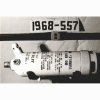

The extreme right photo above shows the standard JATO of the fifties, the 12AS-1000, weighing 205lb (including 90lb of propellant), giving 1000lb of thrust for 12 seconds. It measured approximately 36 inches in length, and 10 inches in diameter.
The photo on its left shows the 4AS-1000 or JATO Mk2 from 1953 developping 1000lb of thrust for 4 seconds. Due to its short duration, the 4AS-1000 was not as widely used as the standard 12AS-1000 and 14AS-1000.
The Mk6 above (second photo from the left) was the standard NATO equipment of the sixties and seventies, weighing 144lb (65kg) with 50% of this weight being the propellant, and delivered 4000lb of thrust for 15 seconds. The F84s for insatne used 4 of these "bottles" to take off.
The British RATOG was different:
The rockets were the standard 3 inch RP motors without the cruciform tail and warhead, and included in a container 25 inches diameter and 4 f t 3.3/4 in long, of welded steel construction. 2 such containers were installed on the aircraft.
The rockets were fired sequentially for sustained boost rather than all at once in one big (but short) kick.
Two Fulmar II were used for Rocket Assisted Take-Off Gear (RATOG) trials at RAE Farnborough from May to Iuly 1941 and again in July 1942. In 1943, these pods were tried on the Whitley bomber and the Hamilcar and Horsa gliders. There is also photo evidence of RATOG rockets on Hotspur gliders.
At 500 ft altitude the containers could be jettisoned, and landed by parachute for re-use.
There is also photo evidence for Swordfish being equipped with RATOG.
RATOG became after 1943 a standard fitting available for all Seafires, however, the early Griffon-engine Seafires were not allowed to use RATOG at sea unless they were ranged forward of the first crash barrier on deck. Later the equipment was authorized on Barracudas, Sea Furies and Fireflies.
These were mounted under the Seafires in ww2:

These were the ones mounted under the Sea Fury in the fifties

The Germans in ww2 used on their Ar234 jet bombers a pair of Walter rocket motors with parachutes that were jettisonned after use.
On the Gotha Go142 gliders they used a real RATOG made of two Rheinmetall-Borsig RI 502 solid-fuel rockets :











